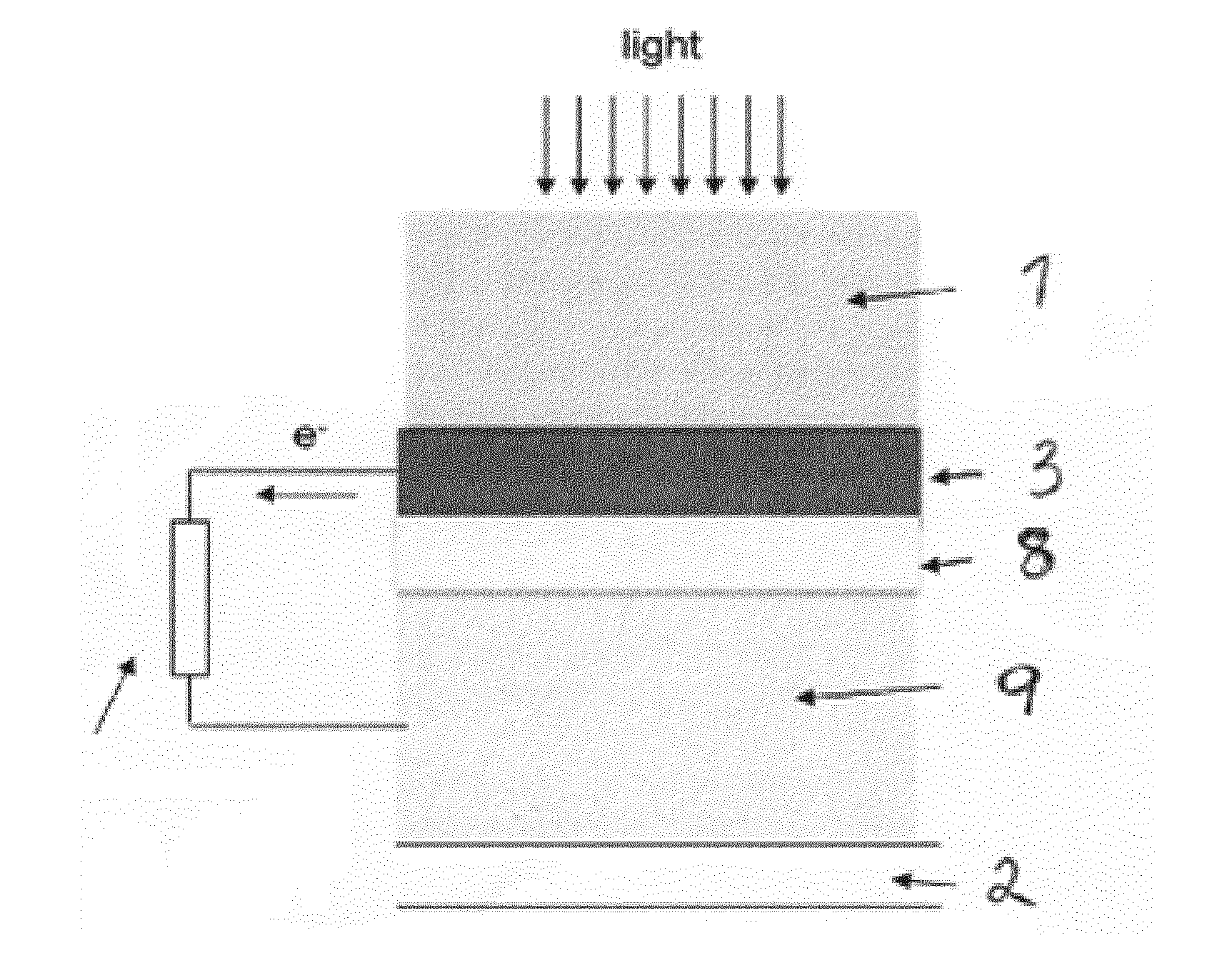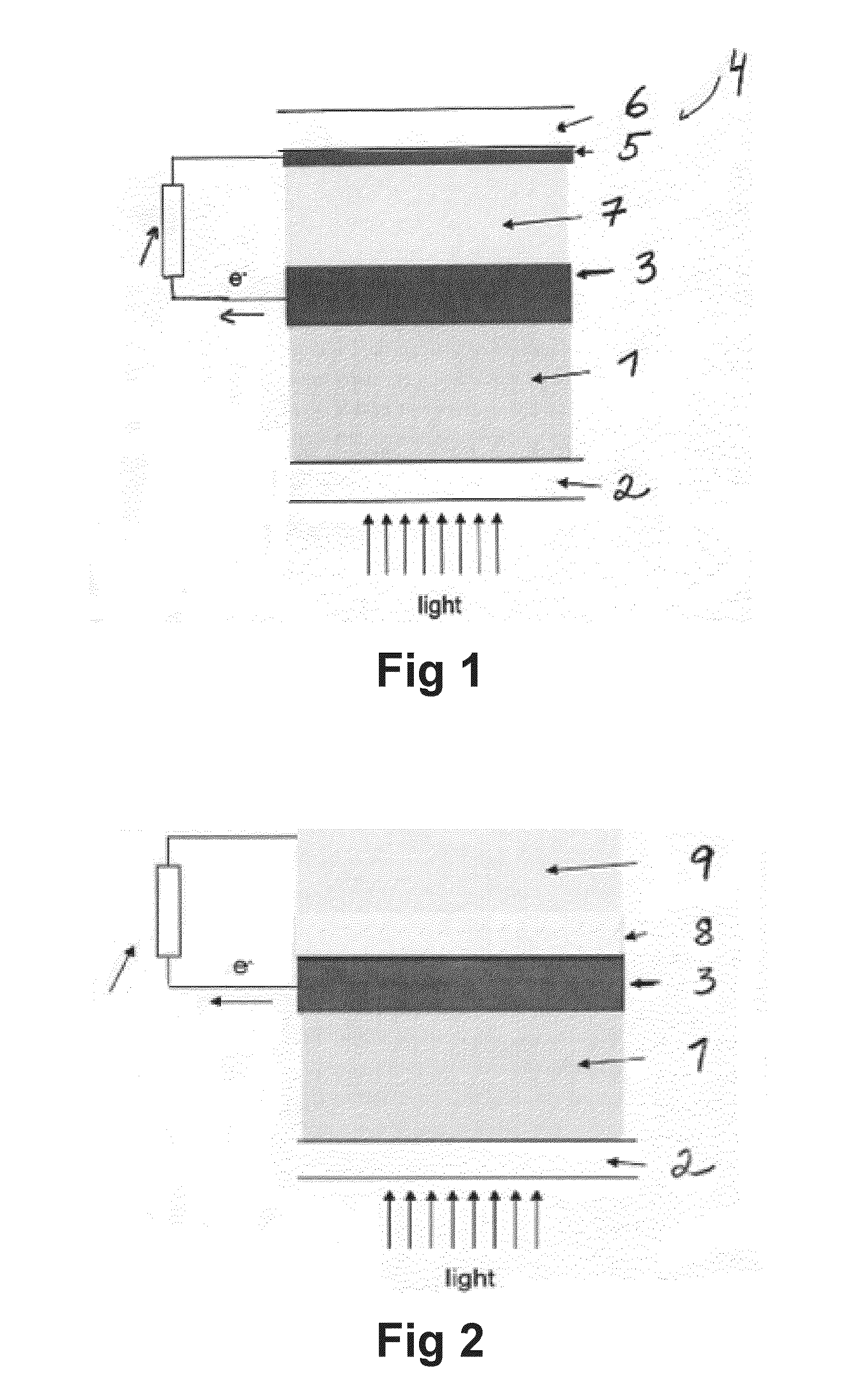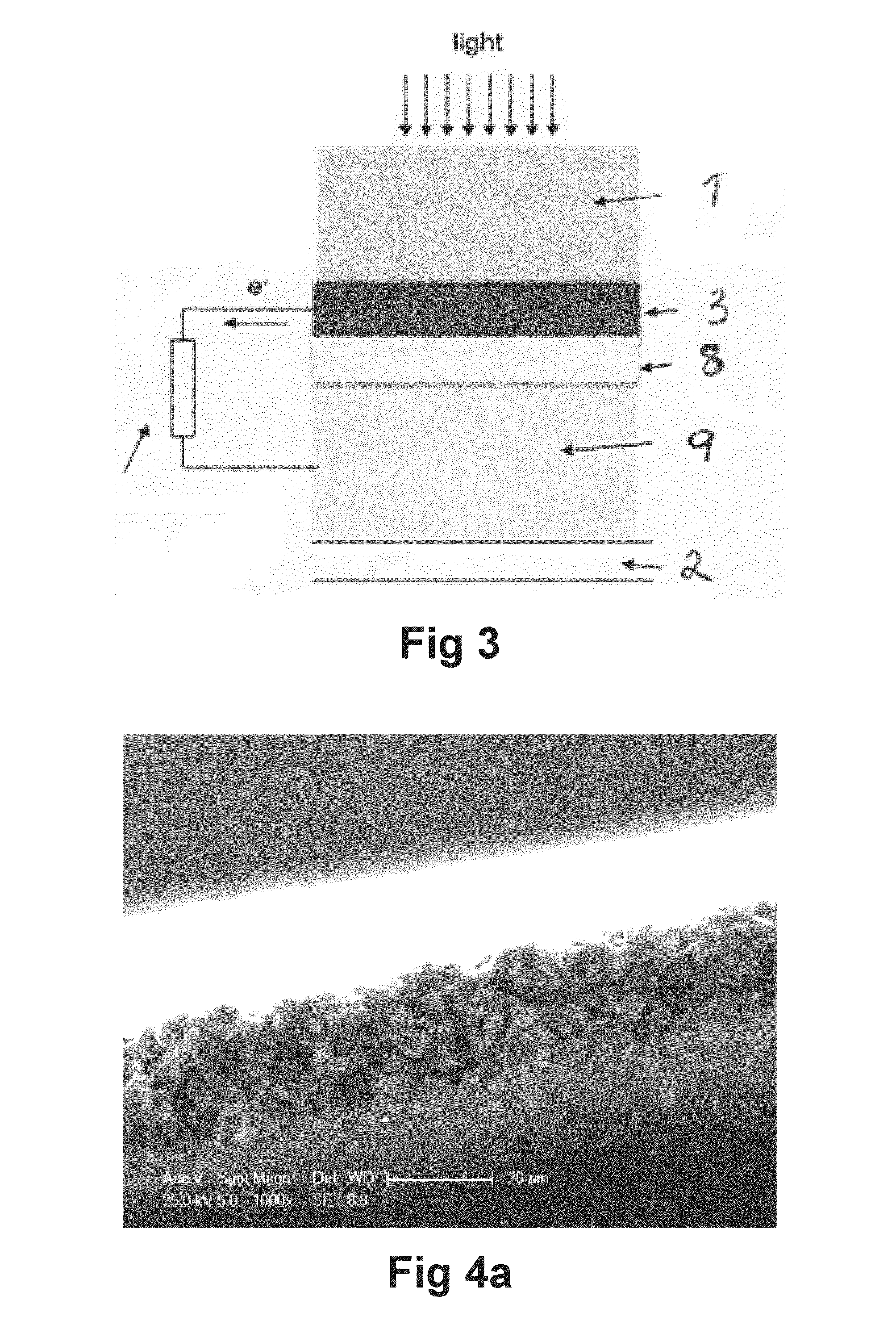Method for manufacturing dye-sensitized solar cells and solar cells so produced
a solar cell and dye-sensitive technology, applied in the field of dsc-based dsc-based dsc-based dsc-based solar cell manufacturing, can solve the problems of increased electronic ohmic losses in the tco layer, inability to have high transparency and high conductivity at the same time, and low conductivity of transparent conductive oxid
- Summary
- Abstract
- Description
- Claims
- Application Information
AI Technical Summary
Benefits of technology
Problems solved by technology
Method used
Image
Examples
example 1
Porous Conductive Powder Layer on a Ceramic Substrate
[0103]An ink is prepared by mixing TiH2 with terpineol. The ink is then bead milled for 25 minutes at 5000 RPM using 0.3 mm zirconia beads. The zirconia beads are separated from the ink by filtration. The filtered ink was then printed onto a 38 μm thick, glass microfiber based substrate and then dried at 200° C. for 5 minutes. Subsequently the coated glass microfiber substrate was vacuum sintered at 585° C. The pressure during sintering was lower than 0.0001 mbar. The resulting porous conductive powder layer is a titanium metal porous film.
[0104]Subsequently further DSC components were printed onto the porous conductive powder layer and ceramic microfiber based substrate.
[0105]A variation of example 1 is that the substrate is based on aluminosilicate fibres.
[0106]Another variation of example 1 is that the substrate comprises a mixture of aluminosilicate fiber and glass microfiber.
[0107]Another variation of example 1 is that the su...
example 2
Porous Conductive Powder Layer Printed on a Ceramic Substrate
[0109]An ink is prepared by mixing TiH2 with terpineol. The ink was then bead milled for 30 minutes at 4000 RPM using 0.3 mm zirconia beads. The zirconia beads were separated from the ink by filtration. The filtered ink was then printed onto a 40 μm thick, 90% porous ceramic substrate of aluminosilicate fibers and then dried at 200° C. for 5 minutes. Subsequently the coated ceramic substrate was vacuum sintered at 850° C. for 30 minutes and then cooled down to around 20° C. The pressure during sintering was lower than 0.0001 mbar. The resulting porous conductive powder layer is a titanium metal porous film. Subsequently further DSC components were printed onto the porous conductive powder layer and ceramic substrate. The thickness of the porous conductive powder layer was 16 micro-meter and the porosity 44%. The sheet resistance measured was lower than 0.5 Ohm / sq.
[0110]A variation of example 2 is that the ceramic substrate...
example 3
Second Porous Conductive Powder Layer with Platinum Deposited on Ceramic Substrate
[0111]An ink is prepared by mixing TiH2 with terpineol. The ink is bead milled for 25 minutes at 5000 RPM using 0.3 mm zirconia beads. The zirconia beads are separated from the ink by filtration. The filtered ink is mixed with hexachloroplatinic acid and printed onto a 33 μm thick, porous ceramic substrate of aluminosilicate and then dried at 200° C. for 5 minutes. Subsequently the printed ceramic substrate is vacuum sintered at 585° C. and then cooled down to room temperature. The pressure during sintering was lower than 0.0001 mbar. The resulting second porous conductive powder layer comprises a titanium metal porous film with catalytic amounts of platinum.
[0112]A variation of example 3 is that the filtered ink is not mixed with hexachloroplatinic acid but that a solution of hexachloroplatinic acid is printed onto the vacuum sintered porous conductive powder layer which is then dried and then heated ...
PUM
| Property | Measurement | Unit |
|---|---|---|
| temperature | aaaaa | aaaaa |
| temperature | aaaaa | aaaaa |
| thickness | aaaaa | aaaaa |
Abstract
Description
Claims
Application Information
 Login to View More
Login to View More - R&D
- Intellectual Property
- Life Sciences
- Materials
- Tech Scout
- Unparalleled Data Quality
- Higher Quality Content
- 60% Fewer Hallucinations
Browse by: Latest US Patents, China's latest patents, Technical Efficacy Thesaurus, Application Domain, Technology Topic, Popular Technical Reports.
© 2025 PatSnap. All rights reserved.Legal|Privacy policy|Modern Slavery Act Transparency Statement|Sitemap|About US| Contact US: help@patsnap.com



